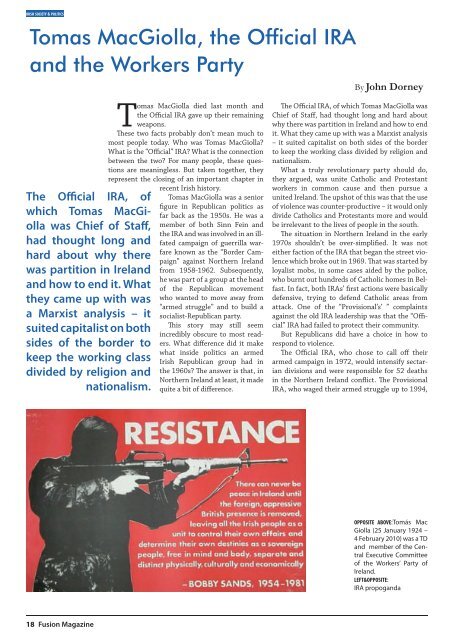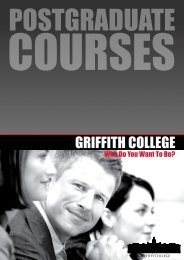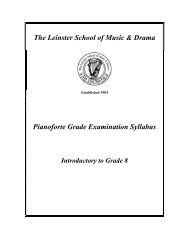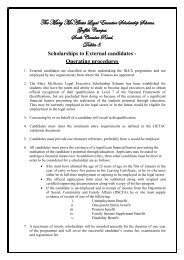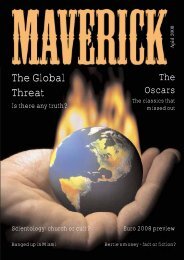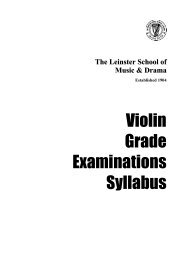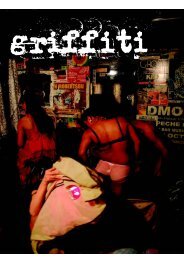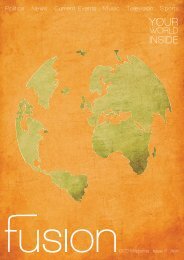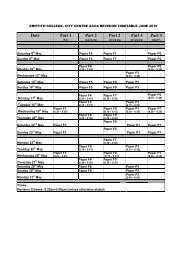Click here to View - Griffith College Dublin
Click here to View - Griffith College Dublin
Click here to View - Griffith College Dublin
- No tags were found...
You also want an ePaper? Increase the reach of your titles
YUMPU automatically turns print PDFs into web optimized ePapers that Google loves.
irish society & politicsTomas MacGiolla, the Official IRAand the Workers PartyBy John DorneyThe Official IRA, ofwhich Tomas MacGiollawas Chief of Staff,had thought long andhard about why t<strong>here</strong>was partition in Irelandand how <strong>to</strong> end it. Whatthey came up with wasa Marxist analysis – itsuited capitalist on bothsides of the border <strong>to</strong>keep the working classdivided by religion andnationalism.Tomas MacGiolla died last month andthe Official IRA gave up their remainingweapons.These two facts probably don’t mean much <strong>to</strong>most people <strong>to</strong>day. Who was Tomas MacGiolla?What is the “Official” IRA? What is the connectionbetween the two? For many people, these questionsare meaningless. But taken <strong>to</strong>gether, theyrepresent the closing of an important chapter inrecent Irish his<strong>to</strong>ry.Tomas MacGiolla was a seniorfigure in Republican politics asfar back as the 1950s. He was amember of both Sinn Fein andthe IRA and was involved in an illfatedcampaign of guerrilla warfareknown as the “Border Campaign”against Northern Irelandfrom 1958-1962. Subsequently,he was part of a group at the headof the Republican movementwho wanted <strong>to</strong> move away from“armed struggle” and <strong>to</strong> build asocialist-Republican party.This s<strong>to</strong>ry may still seemincredibly obscure <strong>to</strong> most readers.What difference did it makewhat inside politics an armedIrish Republican group had inthe 1960s? The answer is that, inNorthern Ireland at least, it madequite a bit of difference.The Official IRA, of which Tomas MacGiolla wasChief of Staff, had thought long and hard aboutwhy t<strong>here</strong> was partition in Ireland and how <strong>to</strong> endit. What they came up with was a Marxist analysis– it suited capitalist on both sides of the border<strong>to</strong> keep the working class divided by religion andnationalism.What a truly revolutionary party should do,they argued, was unite Catholic and Protestantworkers in common cause and then pursue aunited Ireland. The upshot of this was that the useof violence was counter-productive – it would onlydivide Catholics and Protestants more and wouldbe irrelevant <strong>to</strong> the lives of people in the south.The situation in Northern Ireland in the early1970s shouldn’t be over-simplified. It was noteither faction of the IRA that began the street violencewhich broke out in 1969. That was started byloyalist mobs, in some cases aided by the police,who burnt out hundreds of Catholic homes in Belfast.In fact, both IRAs’ first actions were basicallydefensive, trying <strong>to</strong> defend Catholic areas fromattack. One of the “Provisional’s’ ” complaintsagainst the old IRA leadership was that the “Official”IRA had failed <strong>to</strong> protect their community.But Republicans did have a choice in how <strong>to</strong>respond <strong>to</strong> violence.The Official IRA, who chose <strong>to</strong> call off theirarmed campaign in 1972, would intensify sectariandivisions and were responsible for 52 deathsin the Northern Ireland conflict. The ProvisionalIRA, who waged their armed struggle up <strong>to</strong> 1994,OPPOSITE ABOVE:Tomás MacGiolla (25 January 1924 –4 February 2010) was a TDand member of the CentralExecutive Committeeof the Workers’ Party ofIreland.LEFT&OPPOSITE:IRA propoganda18 Fusion Magazine


